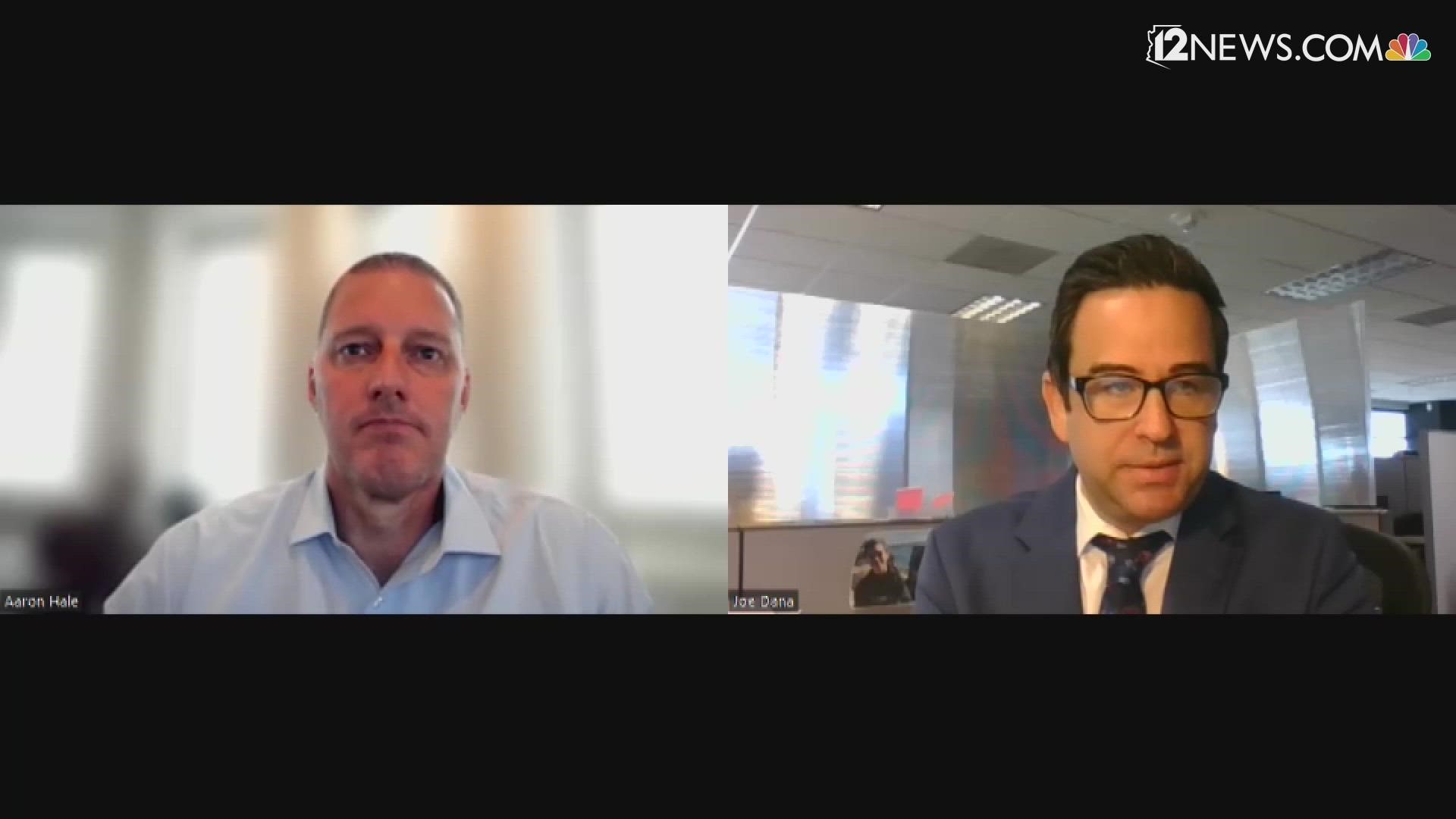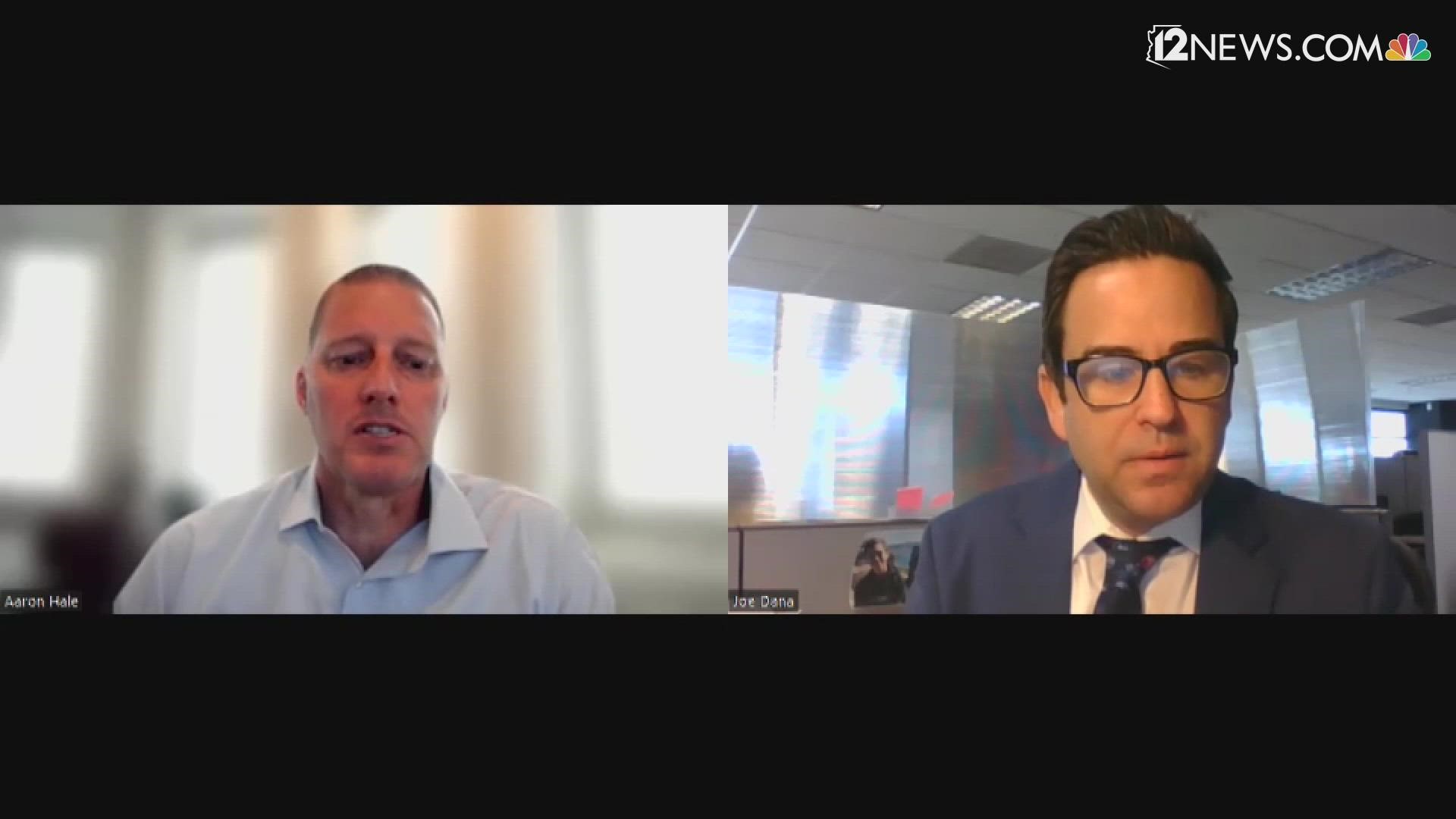ARIZONA, USA — This week Legacy Traditional School, a network of K-8 charter schools around Arizona, announced it approved an average ambitious 16% pay hike for teachers.
The budgeting move allows Legacy’s two dozen schools in Arizona to offer more attractive salaries to prospective teachers during a time that schools are struggling to hire and retain staff.
As of Monday, Legacy schools had 68 full-time teaching positions still open. The 16% boost will bring the average salary to more than $60,000, said Aaron Hale, Executive Director and co-founder of Legacy.
“We are seeing a lot more teachers leaving the profession. There’s such a demand from the private sector workforce,” Hale said. “That’s one of the reasons we wanted to make a historic investment in our own teachers, to keep them here.”
RELATED: Arizona school districts in 'mad scramble' to hire teachers while spending cap goes unsolved
Hale credits new school funding plan
Hale, who has an MBA and accounting degree in information systems, credited the school’s philosophy to operate “as efficiently as possible” and keep money “in the classroom” for the salary increase. He adds that the Arizona State Legislature’s passage of a budget increase was crucial.
“As soon as we saw that coming down the pipeline we began working on ‘how do we utilize those funds? It really came back to the fact that we need to pay teachers more,” Hale said.
He said Arizona needs competitive salaries to compete with other states and mentioned he recently saw billboards along the I-10 freeway advertising for teachers to work in Dallas.
“Some of these states like Texas, Georgia, Florida, who have comparable standards of living and comparable weather, it is a temptation for teachers,” Hale said.
VIDEO: Hear more from Aaron Hale on why he started Legacy Traditional Schools
Why aren’t other schools offering similar raises?
The announcement may prompt Arizonans to ask why other charter networks and school districts aren’t offering similar salary bumps.
If some are following suit, they aren’t making it publicly known.
School districts are raising salaries in a range of 2% to 8%, said Marisol Garcia, president of the Arizona Education Association.
The reason for wide discrepancies in salary increases involves many factors.
School districts face spending cap risk that charters do not
Despite the legislature’s passage of a school budget allocating around $800 million of annual revenue, many school district leaders say their hands are tied.
Unlike charter schools, school districts aren’t technically guaranteed the money yet because they face the aggregate expenditure limit (AEL), a cap on the state’s funding formula that became law in 1980. Many legislators agree the AEL is outdated and does not reflect current educational needs. Legislators from both parties voted to lift the cap earlier this year to avoid a financial cliff for schools in March.
The legislature needs to lift the AEL again during a special session this year or during the regular session next year. The delay is causing hesitation among some school administrators to raise salaries right now. There is a fear the legislature could go back on its word.
“Committing further funds is good for recruiting staff and retaining staff but it’s fiscally irresponsible because you can’t overspend,” said Paul Tighe Executive Director of the Arizona School Personnel Administrators Association (ASPAA).
As 12News reported this week, Governor Doug Ducey did not urge the legislature to raise the 2022-2023 AEL during the past session and will not commit to calling a special legislative session to resolve the issue
State Superintendent of Public Instruction Kathy Hoffman is asking the legislature to lift the spending cap now.
“There should be bipartisan support from our leaders to give schools the authority to spend the funding that has been allocated to them,” said Hoffman. “They’re creating unnecessary and undue political issues around something that should not be political.”
Even Aaron Hale of Legacy Traditional School acknowledged that as a charter school, having the surety of new funds without the worry of a spending cap is necessary to provide the 16% raise.
“It’s very important because we’ve had times in the past where funds are appropriated for one time,” Hale said. “It’s hard to give teachers a salary increase in the hope it will be there again next year.”
Schools have unique profiles and varying expenses
School districts and charter schools have unique financial profiles based on the populations they serve, the range of services they provide and the age of their facilities.
For example, many school districts have a “negative funding gap” because they serve a high percentage of low-income students or special education students. That means some schools must dip into general funds to cover additional expenses.
When the special education funding formula was created in 1980, there was no reason for legislators to believe the special education population would be unevenly distributed. Now with school choice, there are uneven distributions.
Some charter networks specialize in special ed students, while others have very low percentages of special ed students.
“In the past statewide, the special ed population may have been even at about 11% but now we’re seeing some districts with 20%. So general funding subsidizes special ed students,” Tighe said. The association represents employees at both district schools and charter schools.
Legacy Traditional School serves an average of 9%-10% of special education students across its schools, Hale said.
The new budget formula passed by the legislature will provide additional funding “weights” to schools for students with mild special needs. The move is expected to help even financial disparities.
Charter schools are getting more per-pupil funds
According to state records, the budget passed by the legislature will amount to an overall average annual “base level increase” of $480 per-pupil in charter schools and $383 per-pupil in district schools. Historically, lawmakers fund charter schools at higher levels because school districts have opportunities to tap into property wealth through local bonds and overrides that charter schools do not.
Average per-pupil operational spending statewide was $9,976 during the fiscal year 2021, according to data from the Arizona Department of Education. That includes expenses for teacher salaries, student support, administration, transportation and food service.
Another advantage charter schools have is they are not obligated to provide transportation. The ADE allocated $274 per student for transportation to charter schools last year, according to Anabela Aportela, a school finance consultant who has worked for charters and district schools. Legacy Traditional Schools, like many charter networks, do not provide transportation.
“Charter schools have greater flexibility with budgets. They don’t have the same regulations with budget adoption as non-charters,” Tighe said.
>> Download the 12 News app for the latest local breaking news straight to your phone.
Up to Speed
Catch up on the latest news and stories on the 12 News YouTube channel. Subscribe today.


